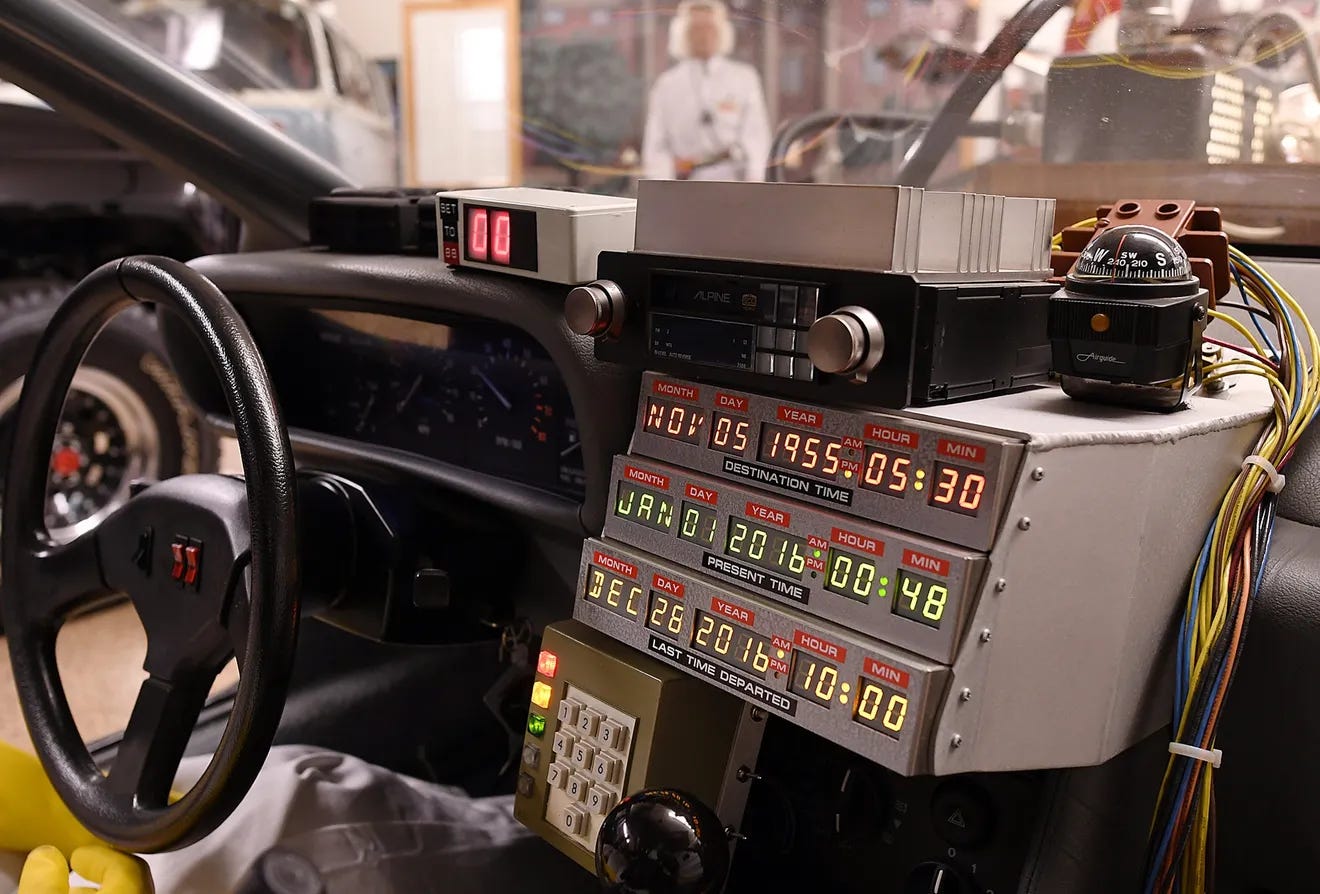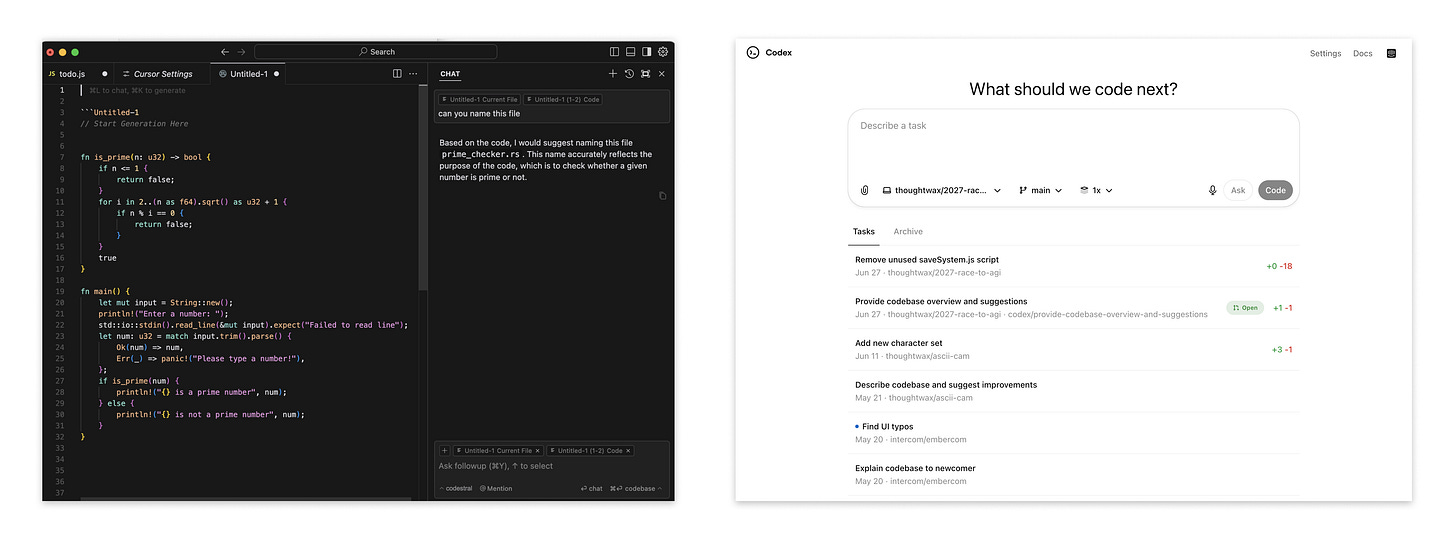Agentic by default, CRUD under the hood
Reimagining the command line
Create, Read, Update, Delete. Beneath the graphical user interface, most software for the past half century has been made of these four verbs. Every UI you've ever used is really a carefully-arranged collection of these actions, quietly manipulating rows in a database.
But AI has violently disrupted things, changing the technical substrate completely. When your foundations change, your house cannot remain the same. So the generational question for software designers is this:
What is the right user interface for a non-deterministic AI system?
Chat and prompt UI emerged as an early contender, the conversational default for a system that wanted to talk back to us. With the chat-centric ChatGPT UI as AI’s inciting incident, even the buzziest new products of 2025 like Claude Code haven’t moved on much further, transposed from a 1980s terminal UI. And like an eager little brother, suddenly every CRUD product has a chat-based AI Agent sidebar elbowing its way into the picture.
This is a fine start! Now you can use the CRUD UI you’re used to, or the little AI helper off to the side. But this is clearly just an awkward pubescent stage on the path to truly AI-native UIs.
The next shift we’ll see is already starting to appear: the “agentic” add-on gradually subsuming more and more of the product surface and attention.
Products are going to become Agentic first, CRUD under the hood.
Codex beats Cursor
Today, if you’re using a coding tool like Cursor, you’re mostly in a GUI workflow. You’re in your local files, switching between code windows, terminals, GitHub commands.
There is an agent inside Cursor that can help you navigate the codebase or suggest changes — but at the end of the day, you’re still very directly in the code. Lots of knobs, dials, and manual pushes.
Cursor vs Codex
OpenAI’s Codex does a lot of the same stuff, but it’s a radically different interface. You connect it to GitHub, and suddenly the interface collapses into a simple, agentic layer. You just tell it what you want — “Add a new character set” — and it handles the digging, the reasoning, the branching and the commits, all behind the scenes.
So the big product leap forward isn’t the addition of an agent. It’s the agent as the primary product interface. WIth Codex, all the CRUD — the editing, the pushing, the config — gets abstracted away. You can still pop the hood if you want to, but the default mode is conversational, task-oriented, and agentic.
The option to use agent or CRUD can make a product powerful. But a strong design stance — agent first, with a clear workflow to perform its actions — makes it meaningful.
Back to the future
We’ve seen this movie before. In the 80s, command line interfaces gave way to more user-friendly 90s graphical user interfaces. But when the GUI didn’t cut it, you could still pop the hood, and open up a DOS prompt inside Windows.
We’ll get there, but it’ll take time. Most traditional tools that are evolving into AI tools are super messy today—they’re still half-CRUD, half-agent, built of different parts that were meant for different purposes. The result is a lack of user clarity.
Products have to move house, not just repaint the walls—and the more complex the CRUD system, the harder it is to unpack all those workflows.
So our CRUD UIs will likely remain with us for a while. Maybe the change will be less stark than Codex vs Cursor, and instead a more user-friendly agentic UI will just start doing more and more of the CRUD work, until it reaches a tipping point.
And there are still dozens of possible design futures to be figured out along with this change. With the agentic UI itself now the star of the show, what shape and form will it take? Will UIs stick to the chat paradigm, or will we have just-in-time generative UIs that we still click and tap on? Or maybe the agentic layer will control the CRUD layer through computer use, and those CRUD interfaces become more machine-optimised than human-optimised?
It’s one of the strange echoes of this current AI moment that we need to cast ourselves back to the future for now, retuning to the primordial soup of command line interfaces, and inventing a whole new interface abstraction all over again.
For designers, this is the opportunity of a lifetime.
If your app design goals are just CRUD with a chat box on top, you’re missing the point. The real future will reimagine the primary experience as agent-first, and then let users dive into CRUD when and only when they need that control.
But it also means going back to old product norms and real, solid product thinking. Codex works because it’s still well-crafted software: clear onboarding, predictable workflows, sensible defaults. The lesson isn’t “let agents run free.” It’s: design agentic experiences as carefully as you’ve always designed CRUD ones. The future will favour architects, not just stylists.
The shift is subtle but profound. CRUD will always be there, under the hood. But the future of software is agentic by default.



